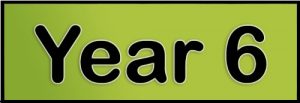
Here is the latest overview of what the children will be learning this term.
Curriculum Overview 2024-25 Year 6
Please send an email to admin@gaytonj.derby.sch.uk if you require any further information or click here to view the Primary National Curriculum.
National Curriculum Expectations for Reading, Writing and Maths can be found here. Links to other curriculum subjects can be found at the bottom of the page.
Reading
* Continue to read and discuss an increasingly wide range of fiction, poetry, plays, non-fiction and reference books.
* Ask questions to improve their understanding.
* Draw inferences and justify them with evidence from the text.
* Summarise the main ideas from more than one paragraph and identify the key details that support these ideas.
* Discuss and evaluate how authors use language, including figurative language, considering the impact on the reader.
* Know the difference between statements of fact and opinion.
* Retrieve, record and present information from non-fiction.
* Participate in discussions about books that are read to them and those they can read for themselves.
* Provide reasoned justifications for their views.
* Make comparisons within and between books .
Writing
* Use organisational and presentational devices to structure text and to guide the reader (e.g. headings, bullet points).
* Use informal language for speech and formal language when appropriate in their writing.
* Make links between paragraphs using a wider range of devices, repetition of words or phrases, the use of adverbials (such as on the other hand, in contrast) and ellipses.
* Use of semi-colon, colon and dash to mark the boundary between dependent clauses.
* Use a colon to introduce a list.
* Select appropriate grammar and vocabulary, understanding how their choices can change and enhance meaning.
* Ensure the consistent and correct use of tense throughout a piece of writing.
* Write legibly, fluently and with increasing speed.
Maths—Number only
* Read, write, order and compare numbers up to at least 10 000 000.
* Multiply numbers up to 4 digits by a two-digit number using the formal written method.
* Divide numbers up to 4 digits by a two-digit whole number using the formal written method of long division and interpret remainders as whole number remainders, fractions or by rounding.
* Identify common factors, common multiples and prime numbers.
* Use a simple formula (algebra).
* Solve problems involving the calculation of percentages .
* Use common factors to simplify fractions and common multiples to express fractions with the same denominator.
* Add and subtract fractions with different denominators and mixed numbers, using equivalent fractions.
* Multiply simple pairs of proper fractions, writing the answer in its simplest form.
* Divide proper fractions by whole numbers.
* Multiply one-digit numbers with up to two decimal places by whole numbers.
* Recall & use equivalences between simple fractions, decimals & percentages, including in different contexts.
* Solve number problems and practical problems that involve all of the above.

